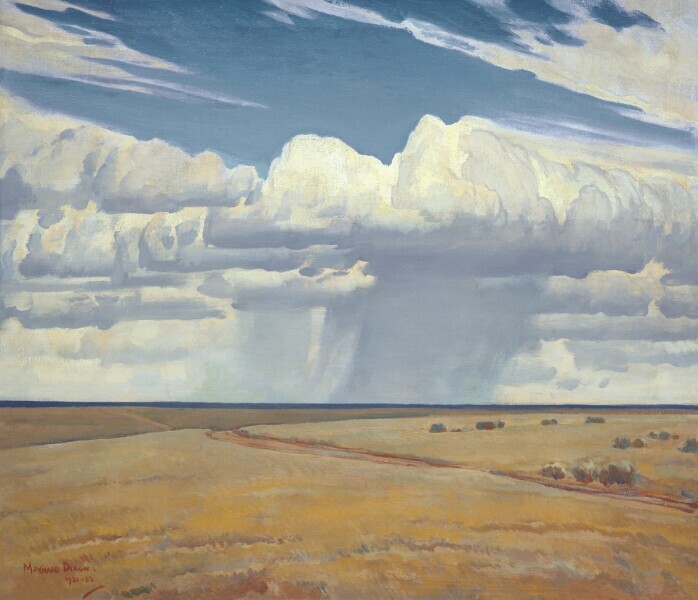Former Poet Laureate and BYU Professor Shared His Love of Dixon’s Art Through Poetry

Maynard Dixon is a name that many Utahns may recognize — he was an American artist active in the early 20th century who painted his way through the western United States. BYU’s Museum of Art is currently hosting an exhibition
BYU's Professor Lance Larsen

To be an amateur is to be a lover of things, and Larsen said that one can clearly see this sentiment in Dixon. He was a master painter, but he also tried his hand at other forms of art out of love for the West and for the sake of creation in itself. One attendee even called Dixon a “quester” and a “lover of life” with an impulse to capture everything he saw through making art.
The MOA’s Dixon exhibit includes several poems along with his paintings. Larsen said many artists normally don’t know how to talk about their own art, but Dixon was well-equipped because of his poetic leanings. He said, “it’s a pleasure to find someone who writes [about his work] in a vivid way,” instead of a “dry academic way.”
Larsen showed many examples of worthy poems (from Dixon and others) along with some of Dixon’s landscapes and discussed what makes a poem work: juxtaposition. He presented Maya C. Popa’s phrase “wound is the origin of wonder” to the audience, and said, “good art attempts to rest opposites together and find some sort of equilibrium.”

A prime example of this juxtaposition in Dixon’s works is the rain he so often painted. In The Plains, (see right) it looks like a sunny day on the surface, but there is rain in the distance. “I like the way that it [the rain] complicates things… If you squint, it seems like a sunny day… and that seems like a contradiction, like the weather isn't following the rules it's supposed to,” said Larsen.
Larsen’s own poetry is also made up of purposeful opposites: a rule he tries to write by is, “think of all the language that you associate with a particular subject, and then use none of it.” The poems that he shared touched on vast subjects like grief, time and one's relationship with God, but were filled with unassuming images like cowboy hats and animal scat. As he read his poems, he projected some of Dixon’s paintings to provide the audience with yet another level of contemplation.
Laurelle Anderson, a Linguistics student who attended the lecture, said that “[Poetry] isn't as easy to consume as perhaps fiction, or other kinds of writing. You have to dig into it a little more.”
Dixon’s poetry and paintings are full of honest emotion and beauty. Larsen finished by saying, “You never quite get to the bottom of his best pieces… he's [always] digging deep.” If you’ve not yet had the chance to wander through and study Dixon’s paintings, Maynard Dixon: Searching for a Home is open until September.